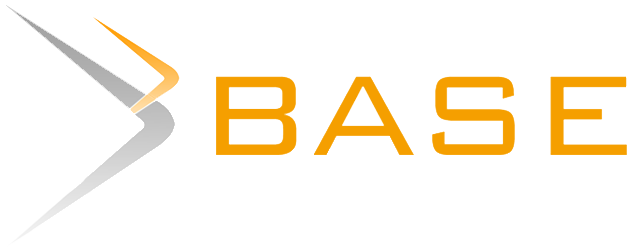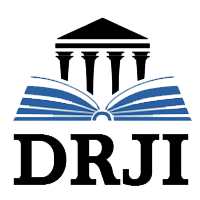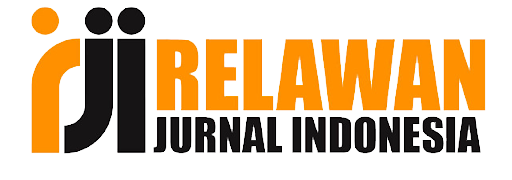Faktor-faktor Penyebab Alexithymia pada Remaja: Literature Review
Abstract
The cases of alexithymia in adolescents in Indonesia increasingly occur. The impact of alexithymia, certainly, significantly affects the quality of life of a teenager. Alexithymia is not a mental disorder, but a phenomenon that can be one of the symptoms of certain mental disorders, thus making the sufferers unable to recognize, feel and identify their emotions. This study aims to determine the factors that cause alexithymia in adolescents. The method used in this study is a literature review concerning alexithymia as the theme. The article search sources were accessed from PubMed and Google Scholar library sources, limiting the years of article publication between 2015-2022. The result of this study is that there are number of factors causing alexithymia, including psychogenic factors (attachment styles, trauma, and chronic illness or pain); biogenic factors (prenatal substances or poisons, and brain structure); primary alexithymia factors (personality); as well as secondary alexithymia factors (stress, anxiety, and fatigue).
Kasus alexithymia pada remaja di Indonesia kian marak terjadi. Dampak alexithymia tentunya sangat mempengaruhi kualitas kehidupan seorang remaja. Alexithymia bukanlah suatu gangguan mental, melainkan fenomena yang dapat menjadi salah satu gejala dari gangguan mental tertentu, sehingga membuat penderitanya tidak mampu mengenali, merasakan dan mengidentifikasi emosinya. Penelitian ini bertujuan untuk mengetahui faktor-faktor penyebab alexithymia pada remaja. Metode yang digunakan dalam tulisan ini yaitu literature review dengan tema alexithymia. Sumber pencarian artikel diakses pada sumber pustaka PubMed dan Google Scholar dengan tahun penerbitan artikel antara tahun 2015-2022. Hasil dari tulisan ini adalah terdapat faktor-faktor penyebab alexithymia, antara lain; faktor psikogenik (gaya kelekatan, trauma, dan penyakit atau nyeri kronis); faktor biogenik (zat-zat atau racun pra-kelahiran, dan struktur otak); faktor alexithymia primer (kepribadian); serta faktor alexithymia sekunder (stres, kecemasan, dan kelelahan)
Keywords
Full Text:
PDFReferences
Aaron, R.V., Fisher, E. A., & Palermo, T. M. (2019). Alexithymia in adolescents with and without chronic pain. Rehabilitation Psychology, 64(4), 469-474. https://dpoi/org/10.1037/rep0000287
Verges-Baez, L., Lozano-Paniagua, D., Requena-Mullor, M., Garcia-Gonzales, J., Garcia Alvarez, R., & Alarcon-Rodriguez, R. (2021). Alexithymia and insecure attachment among male intiate partner violance aggressors in the Dominican Republic. Healthcare, 9(12), 1626. https://doi.org/10.3390/healthcare9121626
Besharat, M. A., & Shahidi, S. (2011). What is the relationship between alexithymia and ego defense styles? A corelational with Iranian students. Asian J Psychiatr, 4(2), 145-9.
Brotheridge, C. M., & Grandey, A. A. (2002). Emotional labor and burnout: Comparing two perspective of “people work”. Journal of Vocation Behavior, 60(1), 17-39.
Cerutti, R., Valastro, C., Tarantino, S., Valeriani, M., Faedda, N., Spensieri, V., & Guidetti, V. (2016). Alexithymia and psychopathological symptoms in adolescent outpatients and mother suffering from migraines: A case control study. Journal of Headache and Pain, 17(1), 39. https://doi.org/10.1186/s10194-016-0640-y
Chaplin, T. M., Freiburger, M. B., Mayes, L.C., & Sinha, R. (2010). Prenatal cocain exposure, gender, and adolescent stress response: A prespective longitudinal study. Neurotoxicol Teratol, 32, 595-604. https://doi.org/10.1016/j.ntt.2010.08.007
Demers, L. A. Olson, E. A., Crowley, D. J., Rauch, S. L., & Ross, I. M. (2015). Dorsal anterior cingulate thickness is related to alexithymia in chilhood trauma-related PTSD. PLoS ONE, 10(10). e0139807. https://doi.org/10.1371/journal.pone.0139807
Dewi, Z. L., Halim, M. S., & Derksen, J. (2016). Attachment in context: The role of demographic factors among Indonesians from three ethnic groups. Journal of Adult Development, 23(3), 163-173. https://doi.org/10.1007/s10804-016-9232-y
Draganski, B. & May, A. (2008). Training-induced structural changes in the adult human brain. Behavioural Brain Research, 192(1), 137-142. https://doi.org/10.1016/j.bbr.2008.02.015
Espinosa, M., Beckwith, L., Howard, J., Tyler, R., & Swanson, K. (2001). Maternal psychopatology and attachment in toddlers of heavy cocaine-using mothers. Infant Ment Health J, 22, 316-333. https://doi.org/10.1002/imhj.1004
Gatta, M., Canetta, E., Zordan, M., Spoto, A., Ferruza, E., Manco, I., Addis, A., Zotto, A. D., Toldo, I., Sartori, S., & Battistella, P. A. (2011). Alexithymia in juvenile primary headache sufferers: A pilot study. The Journal of Headache and Pain, 12(1), 71-80. https://doi.org/10.1007/s10194-010-0248-6
Geni, P. L. (2020). Anxiety dan Depresi sebagai Mediator Atas Pengaruh Personality terhadap Alexithymia. [Skripsi, Universitas Islam Negeri Syarif Hidayatullah]. URL: http://repository.uinjkt.ac.id/dspace/handle/123456789/52178
Gerits, L., Derksen, J. J. L., Verbruggen, A. B., & Katzko, M. (2005). Emotional intelligence profiles or nurse caring for people with severe behaviour problems. Personality and Individu Differrences, 38(1), 33-43. https://doi.org/10.1016/j.paid.2004.03.019
Goldsmith R. E., & Freyd, J. J. (2005). Awereness of emotional abuse. Journal of Emotion Abuse. 5(1), 95-123.
Gündel, H., Lopez-Sala, A., Cellabos-Baumann, A. O., Deus, J., Cardoner, N., Marten-Mittag, B., Soriano-Mas, C., & Pujol, J. (2004). Alexithymia correlates with the size of the right anterior cingulate. Psychosomatic Medicine, 66(1), 132-140. https://doi.org/10.1097/01.psy.0000097348.45087.96
Heshmati, R., & Pellerone, M. (2019). The big five personality traits and dispositional mindfulness as predictors of alexithymia in college students. Clinical Psychology, 16(2), 98-106.
Kurniawan, M. A., & Sudagijono, J. S. (2021). Hubungan alexithymia dan kecenderungan bunuh diri pada remaja laki-laki di Surabaya. Jurnal Psikologi Indonesia, 9(2), 126-136.
Lestari, L. W. (2016). Pengaruh Kecenderungan Alexithymia terhadap Kecemburuan dalam Hubungan Berpacaran. [Tesis, Universitas Muhammadiyah Malang]. Perpsutakaan Universitas Muhammadiyah Malang. http://eprints.umm.ac.id/id/eprint/34287
Lestari, Y. M., Dewi, S. Y., & Chairani, A. (2020). Hubungan alexithymia dengan kecanduan media sosial pada remaja di Jakarta Selatan. SCRIPTA SCORE Scientific Medical Journal, 1(2), 1-9.
Lyvers, M., Mayer, K., Needham, K., & Thorberg, F. A. (2019). Parental bonding, adult attachment, and theory of mind: A developmental model of alexithymia and alcohol-related risk. Journal of Clinical Psychology, 75(7), 1288-1304. https://doi.org/10.1002/jclp.22772
Manninen, M., Therman, S., Suvisaari, J., Ebeling, H., Moilanen, I., Huttunen, M., & Joukamaa, M. (2011). Alexithymia is common among adolescents with severe disruptive behavior. Journal of Nervous and Mental Disease, 199(7), 506-509. https://doi.org/10.1097/NMD.0b013e3182214281
Maslach, C. et al. (2001). Job Burnout. Annu Rev Psychol, 15(1), 397-422.
Mayes, L. C., Grillon, C., Granger, R., Schottenfeld, R. (1998). Regulation of arousal and attention in preschool children exposed to cocaine prenatally. Annals of the New York Academy of Sciences, 846, 126-143.
Merdekasari, A., & Chaer, M. T. (2017). Perbedaan perilaku agresi antara siswa laki-laki dan siswa perempuan di SMPN 1 Kasreman Ngawi. Jurnal Psikologi Pendidikan & Konseling, 3(1), 53-60.
Monteboracci, O., Codispoti, M., Baldaro, B., & Rossi, N. (2004). Adult attachment style and alexithymia. Personality and Individual Differences, 36(3), 499-507. https://doi.org/10.1016/S0191-8869(03)00110-7
Morie, K. P., Zhai, Z. W., Potenza, M. N., & Mayes, L. C. (2020). Alexithymia, emotion-regulation strategis, and traumatic experiences in prenatally cocaine-exposed young adults. The American Journal on Addiction, 29(6), 492-499. https://doi.org/10.1111/ajad.13056
Motan, I. & Genczoz, T. (2007). The relationship between the dimensions of alexithymia and the intensity of depression and anxiety. Turkish Journal of Psychiatry, 18(4), 333-343.
Ng, C. S. M., & Chan, V. C. W. (2020). Prevalence and associated factor of alexithymia among chinese adolescents in Hong Kong. Psychiatry Research, 290. https://doi.org/10.1016/j.psychres.2020.113126
Nook, E. C., Stavish, C. M., Sasse, S. F., Lambert, H. K., Mair, P., McLaughlin, K. A., & Somerville, L. H. (2019). Charting the development of emotion comprehension and abstraction childhood to adulthood using observer-rated and linguistic measures. National Library of Medicine, 20(5), 773-792. https://doi.org/10.1037/emo0000609
Novita, S. A., Suprihatin, T., & Fitriani, A. (2021). Kecerdasan emosinal dan kecenderungan alexithymia pada remaja yang tinggal di panti asuhan. Psisula: Prosiding Berkala Psikologi, 3(1), 326-335. http://dx.doi.org/10.30659/psisula.v3i0.18910
Obeid, S., Akel, M., Haddad, C., Fares, K., Sacre, H., Salameh, P., & Hallit, S. (2019). Factors associated with alexithymia among the Lebanese population: Results of a cross-sectional study. BMC Psychology, 7(1), 80. https://doi.org/10.1186/s40359-019-0353-5
Popa-Velea, O., Diaconescu, L., Mihailescu, A., Jidveian Popescu, M., & Macarie, G. (2017). Burnout and its relationships with alexithymia stress and social support among Romanian medical students: A cross-sectional study. International Journal of Environ mental Research and Public Health, 14(6), 560. https://doi.org/10.3390/ijerph14060560
Rahmawati, I. M., & Halim, M. S. (2018). Alexithymia pada sampel non klinis: Keterkaitannya dengan gaya kelekatan. Jurnal Psikologi, 45(3), 200-217.
Santrock, J. W. (2007). Remaja (Edisi 11, Jilid 1). Erlangga.
Schimmenti, A., Passanisi, A., Carreti, V., La Marca, L., Graniere, A., Lacolino, C., Gervasi, A. M., Maganuco, N. R., & Billieux, J. (2017). Traumatic experiences, alexithymia, and internet addiction symptoms among late adolescentes: A moderated mediation analysis. Addictive Behaviors, 64, 314-320. https://doi.org/10.1016/j.addbeh.2015.11.002
Sifneos, P. E. (1973). The prevalence of “alexithymic” characteristics in psychosomatic patients. Psychotherapy and Psychosomatics, 22, 255-262. https://doi.org/10.1159/000286529
Taylor, G. J., Bagby, R. M., & Parker, J. D. A. (1997). Disorders of affect regulation: Alexithymia in medical and psychiatric illness. Cambridge University Press. https://doi.org/10.1017/CBO9780511526831
Taylor, S., Koch, W. J., Woody, S., & McLean, P. (1996). Anxiety sensitivity and depression: How are they related?. Journal of abnormal psychology, 105(3), 474-479. https://doi.org/10.1037//0021-843x.105.3.474
Teten, A. L., Miller, L. A., Bailey, S. D., Dunn, N. J., & Kent, T. A. (2008). Empathic deficits and alexithymia in trauma-related impulsive aggression. Behavioral Sciences & The Law, 26, 823-832. https://doi.org/10.1002/bsl.
Teicher, M. H., Andersen, S. L., Polcari, A., Anderson, C. M., Navalta, C. P., & Kim, D. M. (2003). The neurobiological consequences of early stress and childhood maltreatment. Neuroscience and Biobehavioral Reviews, 27(1), 33-44. https://doi.org/10.1016/s0149-7634(03)00007-1
Thompson, J. (2009). Emotional dumb: An overview of alexithymia (1st ed.). Natinal
Thorberg, F. A., Young, R. M., Sullivan, K. A., & Lyvers, M. (2011). Parental bonding and alexithymia: A meta-analiysis. European Psychiatrists, 26(3), 187-193. https://doi.org/10.1016/j.eurpsy.2010.09.010
Zhang, C. H., Li, G., Fan, Z. Y., Tang, X. J., & Zhang, F. (2020). Psychological capital mediating the relationship between childhood trauma and alexithymia in Chinese medical students: A cross-sectional study. Psychology Research and Behavior Management, 13, 1343-1352. https://doi.org/10.2147/PRBM.S288647
DOI: https://doi.org/10.24176/perseptual.v8i1.9241
Refbacks
- There are currently no refbacks.

Jurnal Psikologi Perseptual (eISSN 2580-9520) is licensed under a Creative Commons Attribution-ShareAlike 4.0 International License














